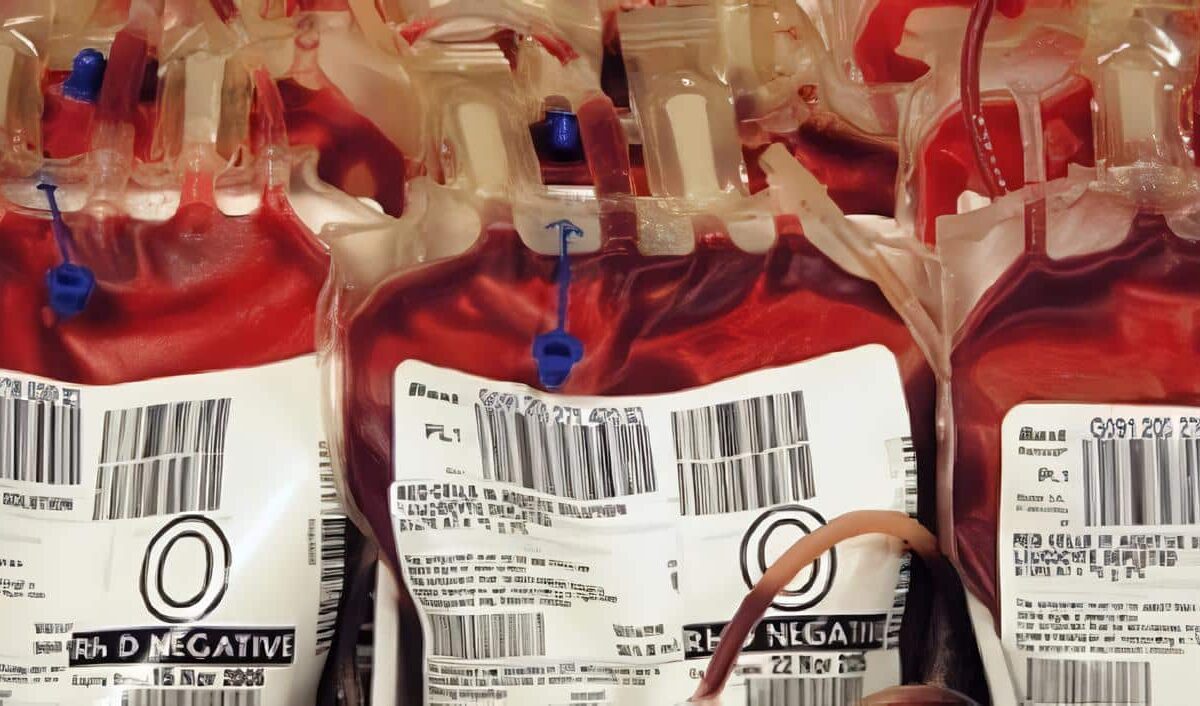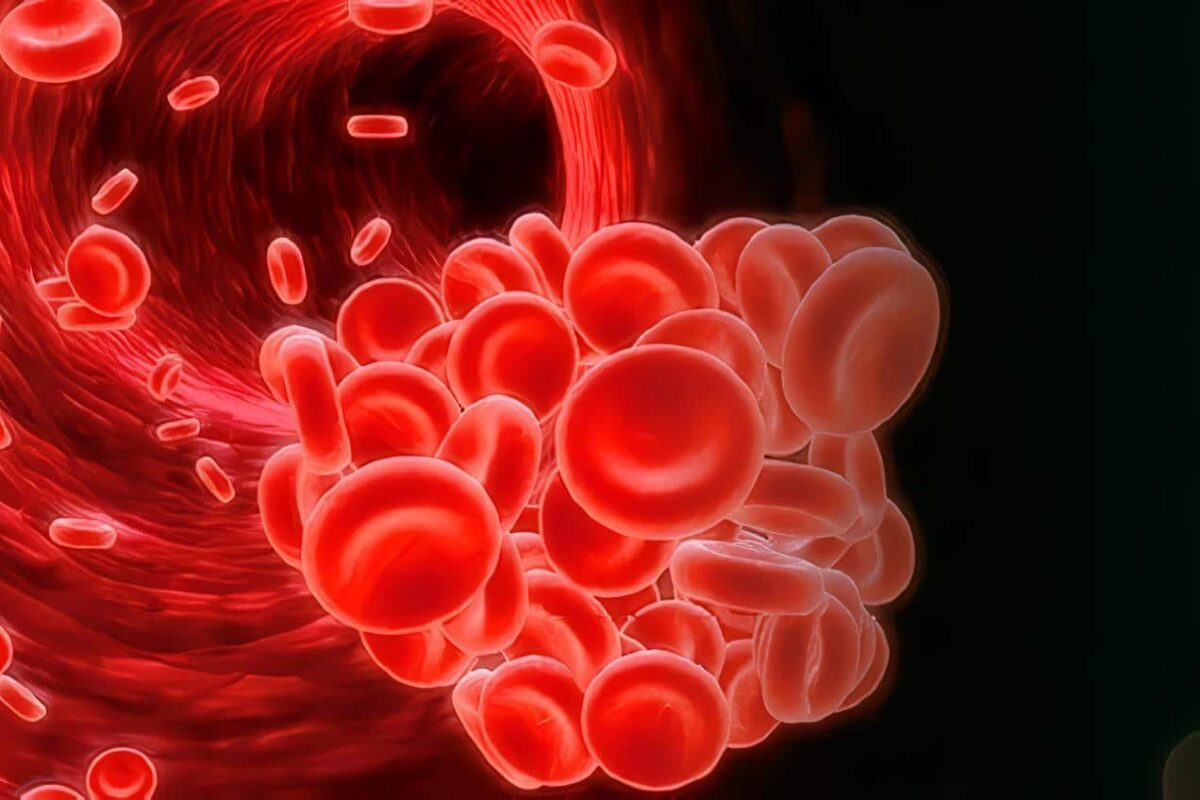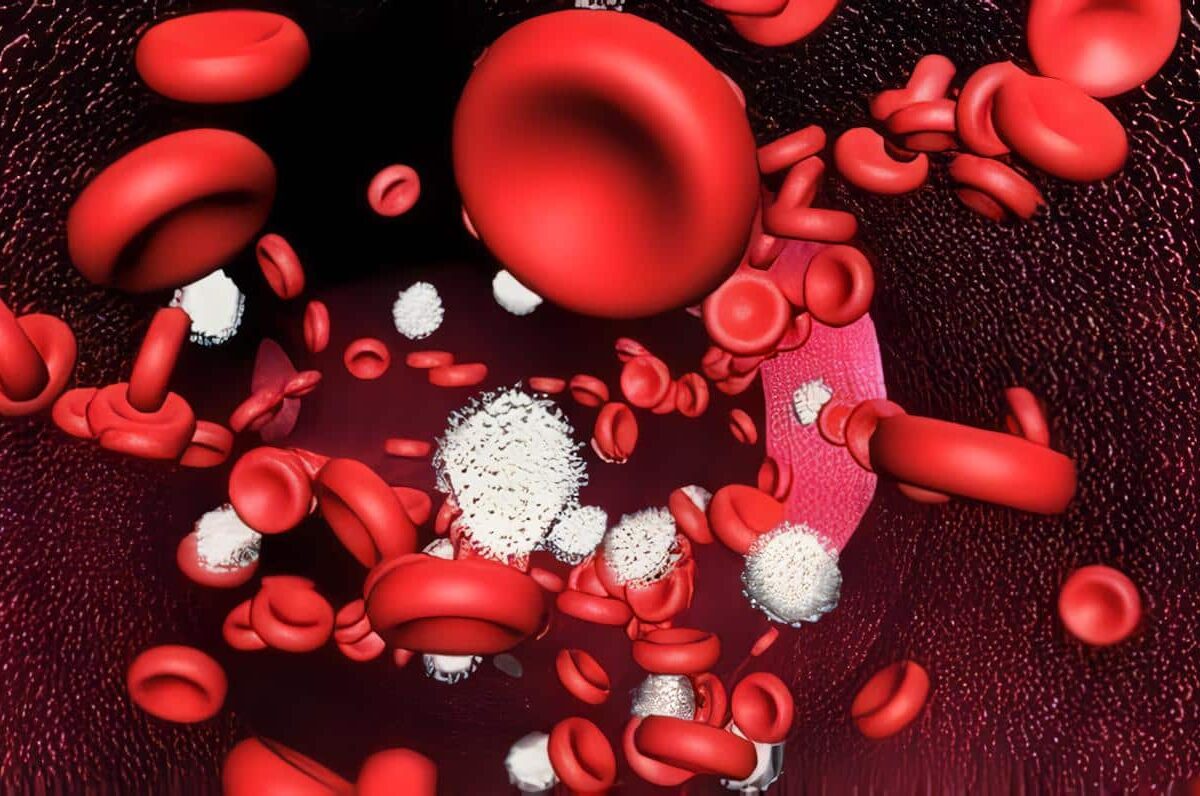5.9
Se presenta un modelo de protocolo de transfusión masiva (PTM). En esta sección se analiza la adaptación local del modelo de PTM y el desarrollo de directrices sobre activación y cesación del PTM.
Adaptación local
Un equipo multidisciplinario debe adaptar el modelo de PTM:
- Incorporar las recomendaciones y puntos de práctica proporcionados en este módulo
- Tener en cuenta los recursos locales (por ejemplo, el acceso a los componentes sanguíneos)
- Proporcionar detalles sobre cómo se entregarán los componentes al corregir el paciente y la ubicación
- Incluir información de apoyo que explique cómo se comunicará el personal clínico, de laboratorio y de apoyo
- Destacar la necesidad de comunicación temprana con un hematólogo o especialista en transfusión.
La plantilla PTM también se puede modificar para poblaciones específicas como los pacientes obstétricos, dado el potencial de hemorragia oculta y el desarrollo temprano de DIC. La instalación local también debe desarrollar materiales para acompañar el PTM, aclarando las funciones y responsabilidades de los miembros del equipo (por ejemplo, tarjetas de tareas).
Activación y cesación
El equipo multidisciplinario también debe desarrollar pautas para la activación y cesación del PTM. Esto ayudará a asegurar que el PTM se utiliza adecuadamente, y el desperdicio de los componentes de la sangre se reduce al mínimo.
La activación del PTM debe tener en cuenta:
- La causa y la tasa de la hemorragia
- El mecanismo de la lesión (si está presente)
- El estado fisiológico actual
- El requisito probable de soporte de componentes sanguíneos en curso.
El modelo de PTM presenta sugerencias sobre cuándo activar un PTM. Las directrices sobre la activación y el cese del PTM deben comunicarse claramente a todo el personal. El uso del PTM debe ser auditado.
Referencias
-
1. Mitra B, Mori A, Cameron PA, Fitzgerald M, Street A and Bailey M. Massive blood transfusion and trauma resuscitation. Injury 2007; 38(9):1023–29. http://www.ncbi.nlm.nih.gov/pubmed/17572415
-
2. Borgman MA, Spinella PC, Perkins JG, Grathwohl KW, Repine T, Beekley AC, Sebesta J, Jenkins D, Wade CE and Holcomb JB. The ratio of blood products transfused affects mortality in patients receiving massive transfusions at a combat support hospital. Journal of Trauma 2007; 63(4):805–13. http://www.ncbi.nlm.nih.gov/pubmed/18090009
-
3. Cosgriff N, Moore EE, Sauaia A, Kenny-Moynihan M, Burch JM and Galloway B. Predicting life-threatening coagulopathy in the massively transfused trauma patient: hypothermia and acidoses revisited. Journal of Trauma 1997; 42(5):857–61. http://www.ncbi.nlm.nih.gov/pubmed/9191667
-
4. Ferrara A, MacArthur JD, Wright HK, Modlin IM and McMillen MA. Hypothermia and acidosis worsen coagulopathy in the patient requiring massive transfusion. American Journal of Surgery 1990; 160(5):515–18. http://www.ncbi.nlm.nih.gov/pubmed/2240386
-
5. Gonzalez EA, Moore FA, Holcomb JB, Miller CC, Kozar RA, Todd SR, Cocanour CS, Balldin BC and McKinley BA. Fresh frozen plasma should be given earlier to patients requiring massive transfusion. Journal of Trauma 2007; 62(1):112–19. http://www.ncbi.nlm.nih.gov/pubmed/17215741
-
6. Stinger HK, Spinella PC, Perkins JG, Grathwohl KW, Salinas J, Martini WZ, Hess JR, Dubick MA, Simon CD, Beekley AC, Wolf SE, Wade CE and Holcomb JB. The ratio of fibrinogen to red cells transfused affects survival in casualties receiving massive transfusions at an army combat support hospital. Journal of Trauma 2008; 64(2Suppl):S79–85. http://www.ncbi.nlm.nih.gov/pubmed/18376176
-
7. Vaslef SN, Knudsen NW, Neligan PJ and Sebastian MW. Massive transfusion exceeding 50 units of blood products in trauma patients. Journal of Trauma 2002; 53(2):291–95. http://www.ncbi.nlm.nih.gov/pubmed/12169936
-
8. Wilson RF, Binkley LE, Sabo FM, Jr., Wilson JA, Munkarah MM, Dulchavsky SA and Diebel LN. Electrolyte and acid-base changes with massive blood transfusions. American Journal of Surgery 1992; 58(9):535–44. http://www.ncbi.nlm.nih.gov/pubmed/1524320
-
9. Moore FA, Nelson T, McKinley BA, Moore EE, Nathens AB, Rhee P, Puyana JC, Beilman GJ and Cohn SM. Massive transfusion in trauma patients: tissue hemoglobin oxygen saturation predicts poor outcome. Journal of Trauma 2008; 64(4):1010–23. http://www.ncbi.nlm.nih.gov/pubmed/18404069
-
10. Vivien B, Langeron O, Morell E, Devilliers C, Carli PA, Coriat P and Riou B. Early hypocalcemia in severe trauma. Critical Care Medicine 2005; 33(9):1946–52. http://www.ncbi.nlm.nih.gov/pubmed/16148464
-
11. Stainsby D, MacLennan S, Thomas D, Isaac J and Hamilton PJ. Guidelines on the management of massive blood loss. British Journal of Haematology 2006; 135(5):634–41. http://www.ncbi.nlm.nih.gov/pubmed/17107347
-
12. Manno CS, Hedberg KW, Kim HC, Bunin GR, Nicolson S, Jobes D, Schwartz E and Norwood WI (1991). Comparison of the hemostatic effects of fresh whole blood, stored whole blood, and components after open heart surgery in children. Blood 77(5):930–36. http://www.ncbi.nlm.nih.gov/pubmed/1995100
-
13. Cotton BA, Au BK, Nunez TC, Gunter OL, Robertson AM and Young PP. Predefined massive transfusion protocols are associated with a reduction in organ failure and Post Injury complications. Journal of Trauma 2009; 66(1):41–48. http://www.ncbi.nlm.nih.gov/pubmed/19131804
-
14. Dente CJ, Shaz BH, Nicholas JM, Harris RS, Wyrzykowski AD, Patel S, Shah A, Vercruysse GA, Feliciano DV, Rozycki GS, Salomone JP and Ingram WL. Improvements in early mortality and coagulopathy are sustained better in patients with blunt trauma after institution of a massive transfusion protocol in a civilian level I trauma center. Journal of Trauma 2009; 66(6):1616–24. http://www.ncbi.nlm.nih.gov/pubmed/19509623
-
15. Cinat ME, Wallace WC, Nastanski F, West J, Sloan S, Ocariz J and Wilson SE. Improved survival following massive transfusion in patients who have undergone trauma. Archives of Surgery 1999; 134(9):964–68 http://www.ncbi.nlm.nih.gov/pubmed/10487591
-
16. Gunter OL, Jr., Au BK, Isbell JM, Mowery NT, Young PP and Cotton BA. Optimizing outcomes in damage control resuscitation: identifying blood product ratios associated with improved survival. Journal of Trauma 2008; 65(3):527–534. http://www.ncbi.nlm.nih.gov/pubmed/18784564
-
17. McLaughlin DF, Niles SE, Salinas J, Perkins JG, Cox ED, Wade CE and Holcomb JB. A predictive model for massive transfusion in combat casualty patients. Journal of Trauma 2008; 64(2Suppl):S57–63. http://www.ncbi.nlm.nih.gov/pubmed/18376173
-
18. Schreiber MA, Perkins J, Kiraly L, Underwood S, Wade C and Holcomb JB. Early predictors of massive transfusion in combat casualties. Journal of the American College of Surgeons 2007; 205(4):541–545. https://www.ncbi.nlm.nih.gov/pubmed/17903727
-
19. Spinella PC. Warm fresh whole blood transfusion for severe hemorrhage: U.S. military and potential civilian applications. Critical Care Medicine 2008; 36(7 Suppl): S340–345. http://www.ncbi.nlm.nih.gov/pubmed/18594261
-
20. Dann EJ, Michaelson M, Barzelay M, Hoffman R and Bonstein L. Transfusion medicine during the summer of 2006: lessons learned in northern Israel. Transfusion Medicine Reviews 2008; 22(1):70–76. http://www.ncbi.nlm.nih.gov/pubmed/18063193
-
21. Duchesne JC, Hunt JP, Wahl G, Marr AB, Wang YZ, Weintraub SE, Wright MJ and McSwain NE, J. Review of current blood transfusions strategies in a mature level I trauma center: were we wrong for the last 60 years? Journal of Trauma 2008; 65(2):272–276. http://www.ncbi.nlm.nih.gov/pubmed/18695461
-
22. Holcomb JB, Wade CE, Michalek JE, Chisholm GB, Zarzabal LA, Schreiber MA, Gonzalez EA, Pomper GJ, Perkins JG, Spinella PC, Williams KL and Park MS. Increased plasma and platelet to red blood cell ratios improves outcome in 466 massively transfused civilian trauma patients. Annals of Surgery 2008; 248(3):447–458. http://www.ncbi.nlm.nih.gov/pubmed/18791365
-
23. Kashuk JL, Moore EE, Johnson JL, Haenel J, Wilson M, Moore JB, Cothren CC, Biffl WL, Banerjee A and Sauaia A. Postinjury life threatening coagulopathy: is 1:1 fresh frozen plasma:packed red blood cells the answer? Journal of Trauma 2008; 65(2):261–270. http://www.ncbi.nlm.nih.gov/pubmed/18695460
-
24. Maegele M, Lefering R, Paffrath T, Tjardes T, Simanski C and Bouillon B. Red-blood-cell to plasma ratios transfused during massive transfusion are associated with mortality in severe multiple injury: a retrospective analysis from the Trauma Registry of the Deutsche Gesellschaft fur Unfallchirurgie. Vox Sanguinis 2008; 95(2):112–119. http://www.ncbi.nlm.nih.gov/pubmed/18557827
-
25. Perkins JG, Andrew CP, Spinella PC, Blackbourne LH, Grathwohl KW, Repine TB, et al. An evaluation of the impact of apheresis platelets used in the setting of massively transfused trauma patients. Journal of Trauma 2009; 66(4 Suppl):S77–84. http://www.ncbi.nlm.nih.gov/pubmed/19359974
-
26. Phillips TF, Soulier G and Wilson RF. Outcome of massive transfusion exceeding two blood volumes in trauma and emergency surgery. Journal of Trauma 1987; 27 (8):903–910. http://www.ncbi.nlm.nih.gov/pubmed/3612868
-
27. Rose AH, Kotze A, Doolan D, Norfolk DR and Bellamy MC. Massive transfusion–evaluation of current clinical practice and outcome in two large teaching hospital trusts in Northern England. Vox Sanguinis 2009; 97(3):247–253. http://www.ncbi.nlm.nih.gov/pubmed/19497086
-
28. Scalea TM, Bochicchio KM, Lumpkins K, Hess JR, Dutton R, Pyle A, et al. Early aggressive use of fresh frozen plasma does not improve outcome in critically injured trauma patients. Annals of Surgery 2008; 248(4):578–584. http://www.ncbi.nlm.nih.gov/pubmed/18936570
-
29. Schwab CW, Civil I and Shayne JP. Saline-expanded group O uncrossmatched packed red blood cells as an initial resuscitation fluid in severe shock. Annals of Emergency Medicine 1986; 15(11):1282–87. http://www.ncbi.nlm.nih.gov/pubmed/3777583
-
30. Snyder CW, Weinberg JA, McGwin G, Jr., Melton SM, George RL, Reiff DA, et al. The relationship of blood product ratio to mortality: survival benefit or survival bias? Journal of Trauma 2009; 66(2):358–62. http://www.ncbi.nlm.nih.gov/pubmed/19204508
-
31. Sperry JL, Ochoa JB, Gunn SR, Alarcon LH, Minei JP, Cuschieri J, et al. An FFP: PRBC transfusion ratio >/=1:1.5 is associated with a lower risk of mortality after massive transfusion. Journal of Trauma 2008; 65(5):986–93. http://www.ncbi.nlm.nih.gov/pubmed/19001962
-
32. Teixeira PG, Inaba K, Shulman I, Salim A, Demetriades D, Brown C, et al. Impact of plasma transfusion in massively transfused trauma patients. Journal of Trauma 2009; 66(3):693–97. http://www.ncbi.nlm.nih.gov/pubmed/19276739
-
33. Velmahos GC, Chan L, Chan M, Tatevossian R, Cornwell EE, Demetriades D, et al. Is there a limit to massive blood transfusion after severe trauma? Archives of Surgery 1998; 133(9):947–52. http://www.ncbi.nlm.nih.gov/pubmed/9749845
-
34. Wudel JH, Morris JA, Jr., Yates K, Wilson A and Bass SM. Massive transfusion: outcome in blunt trauma patients. Journal of Trauma 1991; 31(1):1–7. http://www.ncbi.nlm.nih.gov/pubmed/1986111
-
35. Zink KA, Sambasivan CN, Holcomb JB, Chisholm G and Schreiber MA. A high ratio of plasma and platelets to packed red blood cells in the first 6 hours of massive transfusion improves outcomes in a large multicenter study. American Journal of Surgery 2009; 197(5):565–70. http://www.ncbi.nlm.nih.gov/pubmed/19393349
-
36. Spahn DR, Cerny V, Coats TJ, Duranteau J, Fernandez-Mondejar E, Gordini G. Management of bleeding following major trauma: a European guideline. Critical Care 2007;11(1):R17. http://www.ncbi.nlm.nih.gov/pubmed/17298665
-
37. Chaiwat O, Lang JD, Vavilala MS, Wang J, MacKenzie EJ, Jurkovich GJ and Rivara FP. Early packed red blood cell transfusion and acute respiratory distress syndrome after trauma. Anesthesiology 2009; 110(2):351–60. http://www.ncbi.nlm.nih.gov/pubmed/19164959
-
38. Silverboard H, Aisiku I, Martin GS, Adams M, Rozycki G and Moss M. The role of acute blood transfusion in the development of acute respiratory distress syndrome in patients with severe trauma. Journal of Trauma 2005; 59(3):717–23. http://www.ncbi.nlm.nih.gov/pubmed/16361918
-
39. Dutton R, Hauser C, Boffard K, Dimsitts J, Bernard G, Holcomb J, et al. Scientific and logistical challenges in designing the CONTROL trial: recombinant factor VIIa in severe trauma patients with refractory bleeding. Clinical Trials 2009; 6(5):467–79. http://www.ncbi.nlm.nih.gov/pubmed/19737846
-
40. Boffard KD, Riou B, Warren B, Choong PI, Rizoli S, Rossaint R, et al. Recombinant factor VIIa as adjunctive therapy for bleeding control in severely injured trauma patients: two parallel randomized, placebo-controlled, double-blind clinical trials. Journal of Trauma 2005; 59(1):8–15. http://www.ncbi.nlm.nih.gov/pubmed/16096533
-
41. Isbister J, Phillips L, Dunkley S, Jankelowitz G, McNeil J and Cameron P. Recombinant activated factor VII in critical bleeding: experience from the Australian and New Zealand Haemostasis Register. Internal Medicine Journal 2008; 38(3):156–165. http://www.ncbi.nlm.nih.gov/pubmed/17916172
-
42. Bochicchio GV, Napolitano L, Joshi M, Bochicchio K, Meyer W and Scalea TM. Outcome analysis of blood product transfusion in trauma patients: a prospective, risk-adjusted study. World Journal of Surgery 2008; 32(10):2185–89. http://www.ncbi.nlm.nih.gov/pubmed/18575931







